36 Melt-in-Your-Mouth European Phyllo Pastries Worth Tasting
Phyllo pastries represent a delicate culinary art form with gossamer-thin layers that transform simple ingredients into extraordinary delights.
Mediterranean bakers have perfected these fragile, buttery creations through generations of meticulous craftsmanship.
Delicate sheets of dough become crisp, golden masterpieces that melt on your tongue with incredible lightness.
Skilled artisans carefully stretch and manipulate these translucent membranes into intricate shapes that showcase remarkable technique.
Complex textures emerge from careful folding, brushing, and layering techniques passed down through family traditions.
Each pastry tells a story of cultural heritage, reflecting regional ingredients and time-honored techniques.
Bakers transform humble flour and butter into elegant, crisp confections that celebrate culinary creativity: 36 unique European phyllo pastries await your appreciation.
Unique European Phyllo Pastries with Flaky Perfection
Phyllo dough becomes art in the hands of European bakers. Discover delicate pastries filled with nuts, cheese, or sweet cream, each one light as air and beautifully golden.
Trigona Panoramatos
Trigona panoramatos are golden triangular pastries from Thessaloniki that showcase Greek dessert mastery through their crispy phyllo shells and rich custard filling.
These iconic sweets feature delicate pastry triangles baked to a perfect golden hue and carefully dipped in cold sugar syrup.
Skilled bakers craft the pastry using thin phyllo layers brushed with butter and shaped into precise cone-like triangles.
Sweet vanilla custard made from egg yolks, flour, milk, and cream creates a luscious interior filling for each pastry.
Chopped nuts often provide a crunchy garnish that complements the pastry's smooth custard center.
Professional bakeries throughout northern Greece specialize in creating these intricate desserts.
Traditional preparation involves precise baking techniques and careful syrup soaking to ensure maximum flavor absorption.
Each trigona serves as a delightful representation of Greek pastry craftsmanship and regional culinary traditions.
Bougatsa
Bougatsa is a flaky Greek pastry featuring delicate phyllo layered with creamy semolina custard, originating from Byzantine Constantinople's culinary traditions.
Greek bakers crafted this versatile dish with multiple sweet and savory fillings during Ottoman influences.
Turkish immigrants in Northern Greece, particularly in Serres and Thessaloniki, further developed bougatsa's regional popularity.
Bakers hand-roll thin phyllo sheets to create its signature crisp texture.
Regional variations include cheese and meat fillings alongside the classic custard version.
Greeks traditionally enjoy bougatsa as a breakfast or mid-morning snack.
Street vendors and bakeries across Greece serve this beloved pastry fresh and warm.
Banitsa With Cheese (Banitsa Sas Sirene)
Banitsa is a traditional Bulgarian layered pastry celebrated for its crispy phyllo sheets and creamy cheese filling that melts in your mouth.
Bulgarian families create this iconic dish by carefully stacking buttered phyllo with a rich mixture of eggs, yogurt, and sirene or feta cheese.
Baking soda often adds extra fluffiness to the pie's texture, enhancing its overall flavor profile.
Street vendors and bakeries sell this beloved pastry throughout the year, though it traditionally marked special occasions like Christmas and New Year's Eve.
Savory versions highlight vegetables while sweet variations incorporate fruits for delightful alternatives.
Regional differences across Bulgaria inspire unique ingredient combinations and preparation methods.
Each slice represents a delicious piece of Bulgarian culinary heritage.
Banitsa With Cabbage (Zelnik)
Zelnik is a savory North Macedonian pie bursting with versatile fillings like cheese, spinach, eggs, meat, leeks, and cabbage.
Bakers brush the pie with butter and oil to create a golden-brown exterior that becomes crispy and inviting.
Regional recipes vary widely across different families and communities.
Each slice offers a rich combination of ingredients that reflects local culinary traditions.
Warm serving temperature enhances the pie's taste and aroma.
Yogurt makes an excellent accompaniment to balance the zelnik's richness.
Traditional preparation methods pass down through generations, preserving this beloved national dish.
Burek
Burek is a flaky pastry masterpiece layered with savory fillings that originated in Turkey but became a beloved national dish in Bosnia and Herzegovina.
Ground beef remains the classic and most authentic version, though variations like cottage cheese, spinach, and potato fillings exist with unique local names.
Bakeries typically serve burek rolled into a spiral shape, while restaurants often prepare it as a pie cut into quarters.
Bosnia considers burek more than just food - it's a cultural symbol deeply embedded in social traditions.
Regional variations spread across the Balkans showcase the dish's widespread popularity.
Local folklore even suggests a woman's burek-making skills determine her marriageability.
Generations have passed down recipes, preserving this iconic comfort food's essential character.
Tiropita
Tiropita are savory Greek pastries packed with feta cheese and eggs nestled between crispy, buttery phyllo dough layers.
Greeks enjoy these triangular snacks throughout mid-morning as a quick, satisfying meal between breakfast and lunch.
Originating from Byzantine, Roman, or Turkish culinary traditions, tiropita have become a staple in Greek bakeries nationwide.
Bakers carefully brush each pastry with melted butter before baking to create a golden, flaky exterior.
Regional variations exist across different Greek communities, each adding unique twists to the classic recipe.
Small bakeries and street vendors frequently sell these portable treats to hungry locals and tourists.
Accompanying dips often complement the rich, salty cheese filling.
Tiropita serve as both a quick breakfast alternative and a popular appetizer in Greek cuisine.
Galaktoboureko
Galaktoboureko is a luxurious Greek custard pastry layered with crisp phyllo sheets and rich semolina cream.
Greek bakeries craft this dessert by carefully brushing phyllo with melted butter and filling it with smooth, silky custard.
Bakers drench the golden-baked pastry in fragrant orange-spiced syrup that seeps through delicate layers.
Chilled and sweetened, the dessert offers a perfect balance of crisp texture and creamy interior.
Traditional Greek restaurants and home kitchens frequently serve this iconic treat during celebrations and family gatherings.
Mediterranean culinary traditions deeply respect this complex dessert.
Sugar syrup gives the pastry its signature glossy finish.
Greeks consider galaktoboureko a beloved national sweet that showcases their baking expertise.
Burek Sa Sirom
Burek sa sirom are savory cheese-filled pastries originating from Turkish culinary traditions that have become a beloved Balkan comfort food.
Flaky phyllo dough creates multiple crispy layers surrounding a rich cheese and egg mixture that melts in your mouth.
Regional variations define its shape, with Bosnians preferring coiled rolls and Croatians and Serbs embracing round shapes cut into quarters.
Skillful bakers stretch thin dough sheets to translucent transparency, carefully layering and brushing each with oil or mineral water.
Traditional ingredients include simple flour, salt, water, and sometimes a touch of oil for added richness.
Professional bakers ensure each pastry achieves a perfect golden-brown exterior with a creamy, warm interior.
Cultural debates persist about authentic burek definitions, particularly regarding meat versus cheese fillings.
Mediterranean and Balkan regions continue to celebrate this versatile pastry as a cherished street food and home-cooked favorite.
Sirnica
Sirnica represents a rustic Bosnian cheese pie crafted with delicate phyllo dough and wrapped in a signature spiral technique.
Generations of Bosnian families prepare this traditional dish using thin jufka pastry sheets layered with a creamy blend of fresh cow cheese, sour cream, and eggs.
Rural kitchens often serve sirnica as a standalone meal or complement it with tangy yogurt.
Skilled bakers carefully spread the cheese mixture across each pastry sheet before meticulously rolling the entire pie into a circular shape.
Rural communities have perfected this technique over decades, passing down recipes through family generations.
Bosnian households typically prepare sirnica for gatherings, special occasions, and weekend meals.
Regional variations might include subtle changes in cheese ratios or additional ingredients.
Mountain regions especially treasure this simple yet satisfying pastry as a staple comfort food.
Spanakopita
Spanakopita is a beloved Greek savory pastry featuring layers of crisp phyllo dough enveloping a rich spinach and feta cheese filling that originated during the Turkish occupation 400 years ago.
Field workers first developed this portable meal as a convenient lunch they could easily carry while working in farms across Greece.
Modern versions showcase a delicate balance of tangy feta, fresh spinach, and hints of lemon juice wrapped in buttery, golden-brown pastry sheets.
Greek diners and restaurants now serve spanakopita as a popular appetizer, snack, or light main course throughout the country.
Culinary experts trace its roots to traditional farming communities where convenient, handheld foods were essential.
Traditional recipes often include dill for added herbal complexity.
Rural workers originally invented these compact pies for sustenance during long workdays.
Greeks continue to enjoy this versatile dish as a symbol of their agricultural heritage and culinary creativity.
Krompirusa
Bosnian potato pita features layers of crispy, paper-thin phyllo dough wrapped around a savory potato filling that defines its rustic charm.
Jufke, the delicate pastry sheets, create a golden, flaky exterior that cradles seasoned diced potatoes and optional grated onions.
Bosnian families traditionally prepare this hearty dish as a satisfying comfort food with roots in home cooking.
Skilled cooks carefully layer the phyllo sheets, brushing each with oil or butter to ensure a crisp texture.
Regional variations might include additional spices or herbs mixed into the potato filling.
Baking transforms the pita into a golden-brown pastry with a tender interior and crunchy exterior.
Potato pita serves as a popular breakfast or side dish across Bosnia.
Restaurants and home kitchens alike celebrate this simple yet delicious pastry as a beloved national culinary treasure.
Skopelitiki Tiropita
Skopelitiki tiropita represents a crispy spiral-shaped cheese pastry originating from Skopelos island in Greece.
Skilled island bakers craft this delicacy using local goat milk feta and traditional techniques.
Olive oil plays a crucial role in both the dough and filling preparation.
Greeks prepare the pastry by rolling thin phyllo dough and spreading crumbled feta cheese across its surface.
Vinegar and salt enhance the dough's texture and flavor profile.
Professional bakers carefully shape the mixture into a distinctive spiral form.
Deep-frying creates a golden, crunchy exterior that contrasts with the soft, tangy cheese interior.
Regional ingredients and cooking methods give this pastry its unique Skopelos character.
Banitsa
Banitsa represents a beloved Bulgarian layered pastry crafted with buttered phyllo sheets generously filled with creamy eggs, tangy yogurt, and white cheeses like sirene and feta.
Bulgaria's cherished pie offers versatile variations including savory vegetable-packed versions with spinach, nettles, cabbage, leeks, and onions.
Zelnik showcases leafy green ingredients while praznik highlights leeks and luchnik features onion fillings.
Sweet banitsa options include tikvenik with pumpkin, apple-based varieties, shtrudel, and mlecna banitsa soaked in a luxurious milk, egg, sugar, and vanilla mixture.
Regional cooks prepare this traditional dish for family gatherings and special occasions.
Professional bakers and home cooks treasure banitsa as a flexible recipe allowing creative ingredient combinations.
Each slice offers a delicious glimpse into Bulgarian culinary heritage.
Pastizz
Pastizz are flaky, golden Maltese savory pastries known for their crisp, layered phyllo dough and versatile fillings that showcase Mediterranean culinary creativity.
Malta's beloved street food originated in the 18th century as an affordable, portable meal for working-class people.
Skilled bakers stretch thin dough and carefully layer it with fat to create the signature delicate, crispy texture.
Traditional fillings include ricotta cheese, mushy peas, and occasional variations like corned beef or anchovy.
Bakers carefully fold the dough into diamond or half-moon shapes before baking until golden brown.
Street vendors and small bakeries across Malta sell these affordable snacks, which remain a popular breakfast and quick bite.
Each pastizz costs around one euro and represents a quick, satisfying meal for locals and tourists.
Maltese families often enjoy these pastries as a quick breakfast or afternoon snack.
Gibanica
Gibanica is a savory Serbian layered pastry blending phyllo dough with rich cheese and egg mixtures, creating a luxurious culinary experience that showcases Balkan comfort food traditions.
Regional variations across Croatia, Slovenia, and Macedonia highlight its cultural significance as a beloved regional specialty.
Serbian versions often feature fresh cow's cheese as the primary filling ingredient.
Guzvara, meaning "crumpled," represents the most popular preparation style where dough sheets are intentionally wrinkled and textured.
Butter and eggs enhance the pastry's creamy, satisfying texture.
Multiple layers create a complex, hearty dish that feels both rustic and elegant.
Traditional recipes pass through generations, connecting families through shared culinary heritage.
Zeljanica
Spinach pie is a traditional Bosnian pastry featuring layered phyllo dough rolled into a delicate spiral with a creamy spinach and cheese filling.
Mountain regions of Bosnia perfected this hearty dish generations ago as a staple meal.
Skilled bakers carefully prepare thin dough sheets called jufka by hand, spreading blanched spinach mixed with fresh cow cheese, cream, and eggs.
Salt and pepper enhance the filling's simple yet rich flavor profile.
Bosnian families typically serve this pie as a satisfying breakfast or light lunch option.
Each region might add slight variations to the basic recipe.
Regional ingredients and personal touches make every spinach pie unique.
Hortopita
Hortopita showcases Greece's love for wild greens wrapped in crispy phyllo pastry, a rustic pie bursting with Mediterranean flavors.
Greek cooks craft this savory pastry using a mix of foraged or garden-grown greens like spinach, Swiss chard, and aromatic herbs.
Feta cheese crumbles add a tangy richness to the filling, while eggs help bind the ingredients together.
Regional variations exist across Greece, with each area featuring its own unique green combinations.
Home kitchens and small bakeries prepare hortopita as a versatile vegetarian dish served warm or at room temperature.
Traditional recipes pass through generations, reflecting the country's agricultural heritage.
Phyllo dough provides a delicate, flaky exterior that contrasts beautifully with the soft, herb-infused interior.
Hortopita serves as a popular breakfast, light lunch, or meze (appetizer) throughout Greek communities.
Maznik
Maznik is a traditional North Macedonian pastry renowned for its distinctive coiled shape and paper-thin layered dough.
Skilled bakers stretch and pull wheat flour dough into delicate sheets, generously brushing each layer with oil before adding savory or sweet fillings like white cheese, spinach, eggs, minced meat, or grated apples.
Regional variations emerge across North Macedonia, with special holiday versions like vasilicharski maznik featuring a hidden coin for St.
Vasilica celebrations.
Bakers carefully roll the filled sheets into a loose sausage-like shape, ensuring air remains between layers for a unique texture.
Oil-brushed and water-sprinkled before and after baking, maznik emerges golden and soft.
Families traditionally prepare this pastry for significant events like name days and home feasts.
Generations have preserved this technique, passing down the intricate method of creating perfectly layered maznik.
Buredzici
Sogan dolme are compact Bosnian pastries bursting with savory minced meat and wrapped in delicate phyllo dough.
Small spiral-shaped rolls characterize these traditional bite-sized treats made using thin dough sheets called jufke.
Skillful preparation involves carefully sprinkling seasoned ground meat across the dough before rolling them into tight cylindrical shapes.
Each pastry delivers a rich, flavorful experience that reflects Bosnia's culinary heritage.
Minced meat typically includes beef or lamb mixed with onions and specific regional spices.
Restaurants and home kitchens across Bosnia prepare these pastries as popular appetizers or quick snacks.
Street vendors often sell sogan dolme as convenient handheld meals for hungry customers.
Regional variations might include slight differences in meat seasoning and dough preparation techniques.
Masourakia
Masourakia are delicate Greek pastry rolls originating from Chios island, featuring a crispy phyllo exterior wrapped around a luxurious sweet filling of mastic-infused ypovrichio, ground almonds, and fragrant citrus zest.
Mediterranean bakers carefully craft these pastries by spreading thin phyllo sheets with butter and rolling them around a luscious mixture of ground almonds and soft ypovrichio.
Traditional techniques involve delicately incorporating egg whites to create a light, airy texture that melts in you mouth.
Mandarin or lemon zest adds a bright, citrusy note that complements the nutty almond base.
Mastic, a unique resin from Chios, provides a distinctive aromatic flavor that sets these pastries apart from other Greek desserts.
Bakers roll the phyllo sheets with precision, ensuring each masouraki looks elegant and uniform.
Greeks often serve these pastries during festive occasions or as a special treat with coffee.
Banitsa With Pumpkin (Tikvenik)
Tikvenik are delicate Bulgarian pastries featuring paper-thin layers of dough generously stuffed with sweet grated pumpkin, ground walnuts, sugar, and warm cinnamon.
Bulgarian families traditionally prepare this seasonal dessert during winter celebrations, especially on Christmas Eve.
Winter gatherings frequently feature tikvenik as a comforting sweet treat shared among relatives.
Each pastry showcases intricate layering techniques passed through generations of home bakers.
Bulgarian bakers carefully roll delicate dough sheets around spiced pumpkin fillings.
Gentle baking transforms raw ingredients into golden-brown pastry ribbons.
Powdered sugar dusts the crisp surface, adding final elegant touches.
Versatile tikvenik serves equally well as a breakfast item or evening dessert.
Jabukovaca
Jabukovaca is a mouthwatering Bosnian apple dessert that blends traditional baklava techniques with fresh fruit.
Sarajevo bakers craft this sweet treat using delicate phyllo pastry layered with chopped apples, walnuts, and sugar.
Lemon juice adds a bright tang to the filling, balancing the dessert's rich sweetness.
Vanilla sugar provides an extra aromatic depth to each bite.
Thin layers of pastry create a crisp, flaky texture that contrasts with the soft apple filling.
Walnuts contribute a nutty crunch throughout the pie.
Bosnia's culinary heritage shines through this unique dessert.
Home bakers and restaurants across the region proudly serve jabukovaca as a beloved sweet indulgence.
Millirahmstrudel
Millirahmstrudel celebrates Austrian pastry traditions with a luxurious cream-filled phyllo dough dessert originating near Vienna in the 19th century.
Bakers craft this sweet treat using delicate layers of thin pastry wrapped around a rich filling of bread, raisins, and smooth cream.
Austrian kitchens carefully prepare the strudel by spreading the ingredients across phyllo sheets and rolling them into a compact shape.
Historic recipe records trace the first documented milk-cream strudel version back to 1696, highlighting its long culinary heritage.
Home bakers and restaurant professionals alike love serving this dessert warm with hot vanilla sauce.
Traditional preparation involves precise folding and baking techniques that ensure a crisp exterior and creamy interior.
Raisins add subtle sweetness and texture to the smooth cream filling.
Each slice offers a perfect balance of crisp pastry and silky cream that embodies Austrian dessert elegance.
Meimurska Gibanica
Meimurska gibanica blends Croatian culinary traditions with a rich, multilayered pastry that combines multiple ingredient textures and flavors in each decadent slice.
Regional bakers from Meimurje carefully craft this dessert with phyllo dough layered between creamy cheese, sweet grated apples, crunchy ground walnuts, and earthy poppy seeds.
Raisins, cinnamon, rum, and sugar enhance the complexity of each bite, creating a harmonious balance of sweet and nutty profiles.
Historically served after substantial meals, this pastry offers substantial nutritional value and can stand alone as a satisfying treat.
Generations of Croatian families have perfected the intricate preparation method, ensuring each layer maintains distinct yet complementary characteristics.
Traditional recipes pass through familial lines, preserving authentic preparation techniques.
Careful assembly requires precision and patience to achieve perfect layering.
Regional variations exist, but core ingredients remain consistent across Meimurje's culinary landscape.
Bucnica
Bucnica stands as a cherished Croatian rolled pastry crafted with delicate, paper-thin dough layers embracing a savory filling of grated pumpkin, fresh cheese, and creamy ingredients.
Originating from Croatia's culinary traditions, this strudel-like dish combines rustic ingredients with intricate preparation techniques.
Bakers carefully roll the dough to create multiple flaky layers that encase a rich mixture of pumpkin, salt, butter, sour cream, and eggs.
Home kitchens and regional bakeries often prepare bucnica as a comforting meal that highlights seasonal pumpkin harvests.
Regional variations might include slight tweaks to the filling or dough preparation method.
Skilled bakers take pride in achieving the perfect golden-brown exterior through precise oven baking.
Serving the pastry warm with an extra dollop of sour cream enhances its creamy texture and flavor profile.
Samsades
Samsades are Greek pastry rolls packed with nutty, aromatic flavors and delicate textures that highlight Mediterranean dessert craftsmanship.
Sweet phyllo dough carefully wraps around a rich blend of almonds, sesame seeds, and occasional walnuts seasoned with warm cinnamon and clove spices.
Bakers drench these crispy rolls in local thyme honey or grape must syrup after baking, creating a glossy, sweet coating.
Greeks traditionally prepare samsades during festive celebrations and family gatherings.
Regional variations might include different nut combinations or subtle spice adjustments.
Small bakeries across Greece specialize in these traditional treats.
Homemade samsades reflect generations of baking expertise passed through family kitchens.
Tsouknidopita
Tsouknidopita is a rustic Greek pie packed with wild nettles nestled between crispy phyllo layers.
Mountain shepherds traditionally prepared this hearty dish using foraged stinging nettles from rural landscapes.
Grecian cooks carefully blanch and chop nettles to remove their sharp sting before mixing them with tangy feta cheese and aromatic herbs.
Onions provide additional depth and sweetness to the green filling.
Regional variations exist across different Greek communities, with some families adding eggs or additional wild greens.
Phyllo pastry creates a delicate, flaky exterior that contrasts beautifully with the soft herbal interior.
Greeks serve tsouknidopita warm as a satisfying appetizer or light meal.
Simple ingredients and generations of culinary wisdom transform wild nettles into a beloved regional specialty.
Bourekia
Bourekia are Cypriot semicircular pastries crafted with delicate phyllo dough and deep-fried to golden perfection.
Sweet versions feature anarich cheese blended with cinnamon and sugar, creating a delightful flavor profile.
Rosewater or orange blossom water often enhances the filling's complexity.
Honey or syrup frequently glazes these sweet treats for added richness.
Savory variations include versatile fillings like ground meat, halloumi, spinach, or mushrooms.
These pastries represent a classic Cypriot culinary tradition.
Cyprus locals enjoy bourekia as a popular snack or dessert.
Thin, crispy phyllo dough ensures a satisfying crunch with every bite.
Ruzice
Ruzice orul-pita represents a delicate Bosnian pastry masterpiece blending sweet and nutty flavors in a rose-shaped design.
Yufka pastry sheets form thin layers carefully rolled with ground walnuts and melted butter, creating intricate spiral patterns.
Bakers optionally add raisins for extra complexity and depth to the dessert.
Bosnian families traditionally prepare this treat during special celebrations and festive gatherings.
Home kitchens transform simple ingredients into elegant pastry art through careful rolling and precise cutting techniques.
Each rose-shaped piece demonstrates careful craftsmanship and cultural culinary heritage.
Walnut filling provides rich, earthy undertones complementing the buttery pastry layers.
Small yet significant details make ruzice orul-pita a beloved Bosnian dessert tradition.
Bundevara
Bundevara is a classic Serbian pastry showcasing grated pumpkin wrapped in delicate phyllo sheets, creating a sweet and aromatic dessert that celebrates autumn's harvest.
Serbian bakers craft this traditional pie by layering thin pastry with a mixture of shredded pumpkin, sugar, and warm spices like cinnamon and nutmeg.
Raisins often enhance the filling's complexity, adding subtle bursts of sweetness and texture.
Bakers carefully roll the phyllo sheets around the pumpkin mixture, creating a golden-brown exterior when baked.
Home kitchens and bakeries across Serbia prepare bundevara as a comforting seasonal treat that connects generations through its simple yet flavorful preparation.
Families typically serve the pie warm or at room temperature, dusting it with powdered sugar for an extra touch of sweetness.
Bundevara represents more than just a dessert; it embodies Serbian culinary traditions and agricultural abundance.
Kollpite
Kollpite represents a traditional pastry originating from regional cuisine, crafted through a delicate layering process of thin, stretched dough sheets brushed with oil or melted butter between each layer.
Bakers carefully roll or stretch flour, water, and salt into translucent sheets that create a crispy exterior with a soft interior when baked.
Variations might include yeast and sugar for enhanced texture and flavor.
Some versions incorporate crumbled cheese as a filling, though many cooks prefer serving the pastry plain to highlight its simple ingredients.
Regional bakers often prepare kollpite using techniques passed down through generations.
This versatile pastry serves as a popular side dish or light snack in its home cuisine.
Skilled home cooks take pride in creating perfectly layered, golden-brown kollpite that showcases traditional baking methods.
Byrek Me Qumesht
Byrek me qumesht are traditional Albanian savory pies featuring delicate layers of phyllo dough filled with a creamy mixture of milk, eggs, and butter.
Soft cheese like cottage cheese often enriches the filling, adding extra richness to this beloved national dish.
Regional variations across Albania showcase slight differences in preparation and ingredients.
Bakers carefully layer thin phyllo sheets, creating a flaky, golden exterior that contrasts with the smooth, custard-like interior.
Home kitchens and bakeries throughout the country prepare this comforting pie as a popular breakfast or snack option.
Families pass down recipes through generations, maintaining the authentic cooking techniques.
Mountains and coastal regions each contribute unique touches to the basic recipe.
Albanians consider this pie a staple of their culinary heritage, enjoying it warm and fresh from the oven.
Kajmacnica
Kajmacnica is a luxurious Bosnian dessert featuring layers of golden phyllo pastry wrapped around creamy semolina custard and generously soaked in sweet agda syrup.
Originating from Balkan culinary traditions, this dessert closely resembles Greek galaktoboureko with its rich, custardy profile.
Cooks prepare the custard by slowly cooking milk, sugar, butter, and semolina into a thick mixture.
Eggs and kaymak are then folded into the warm base, creating a smooth, velvety filling.
Delicate phyllo sheets carefully encase the custard before baking to a crisp, golden brown.
Once baked, the pastry receives a generous pour of sugar syrup, which seeps into every layer.
Served warm, kajmacnica offers a perfect balance of crisp pastry and silky custard.
Bosnian families often enjoy this sweet treat during special gatherings and celebrations.
Banitsa With Onions (Luchnik)
Luchnik is a savory Bulgarian pastry brimming with caramelized onions or leeks nestled between delicate filo layers.
Bulgarian bakers craft this rustic dish by carefully layering thin pastry sheets with a rich onion or leek filling that sometimes includes rice, meat, or additional vegetables.
Regional variations enhance the pastry's complexity, allowing cooks to experiment with different ingredients and techniques.
Traditional preparation involves whisking ingredients and carefully arranging them between translucent filo sheets.
Home kitchens and bakeries across Bulgaria cherish this hearty pastry as a comforting meal or satisfying snack.
Baking transforms the raw ingredients into a golden-brown, fragrant creation that melts in you mouth.
Each slice reveals intricate layers of flavor and texture characteristic of Bulgarian culinary traditions.
Regional differences contribute to luchnik's unique character, making it a beloved staple in Bulgarian cuisine.
Kungullur
Kungullur dominates Albanian dessert traditions as a rustic pumpkin pie featuring delicate phyllo pastry layers packed with sweet mashed pumpkin, butter, salt, and sugar.
Bakers carefully stack thin pastry sheets around the pumpkin filling, creating a crisp exterior that transforms into a golden-brown masterpiece when baked.
Each slice promises a warm, comforting experience with its rich pumpkin essence and buttery texture.
Rural Albanian families often prepare this seasonal dessert during autumn harvest celebrations.
Regional variations might include additional spices like cinnamon or nutmeg for extra depth.
Generations have passed down the recipe through traditional cooking methods.
Home kitchens across Albania continue to embrace this simple yet satisfying pastry.
Serving kungullur with milk completes its nostalgic culinary journey.
Gracanska Tenka Gibanica
Gracanska tenka gibanica stands as Zagreb's distinctive phyllo pastry marvel, featuring an open-faced design with minimal dough edges that highlights its rich cheese and egg filling.
Croatian bakers craft this regional specialty using thin layers of handmade dough blended with fresh cow's cheese, wheat grits, and heavy cream.
Flour, eggs, salt, and oil combine to create the delicate pastry base that defines its unique texture.
Traditional preparation involves carefully brushing the assembled gibanica with eggwash and butter before baking.
Kitchen experts from Zagreb's Gracani neighborhood developed this recipe generations ago, celebrating local culinary traditions.
Wheat grits provide a subtle grainy texture that complements the smooth cheese mixture.
Salt enhances the overall flavor profile, creating a balanced savory experience.
Regional pride shines through in every carefully crafted slice of this beloved Croatian pastry.
What Classifies a Pastry as “Phyllo”?
Phyllo pastry, also spelled filo, is defined by its paper-thin sheets of unleavened dough. This dough is rolled or stretched out to an almost translucent thinness, creating delicate layers that crisp up beautifully when baked.
Unlike puff pastry, phyllo doesn’t use butter or fat within the dough itself - instead, layers are brushed with butter or oil during assembly to achieve flakiness and richness.
Originating from the Middle East and Mediterranean regions, phyllo is prized for its light, crispy texture that provides a perfect contrast to various fillings.
How Do Sweet and Savory Phyllo Pastries Differ in Texture and Flavor?
Sweet and savory phyllo pastries share the same crisp, flaky texture but differ significantly in flavor profiles and fillings:

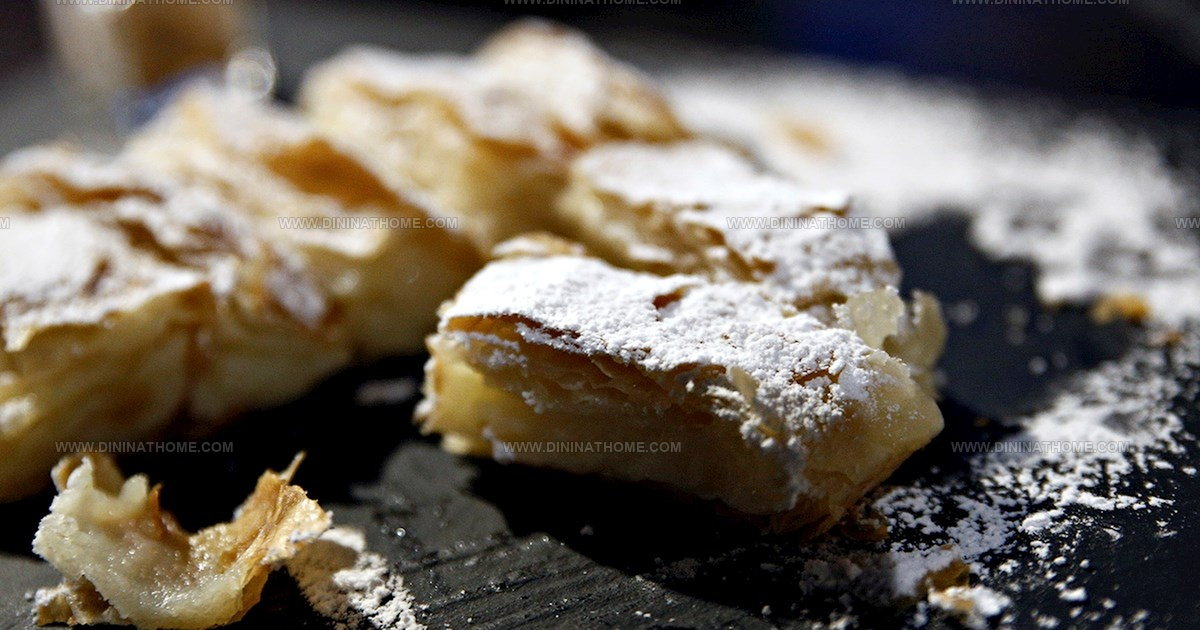
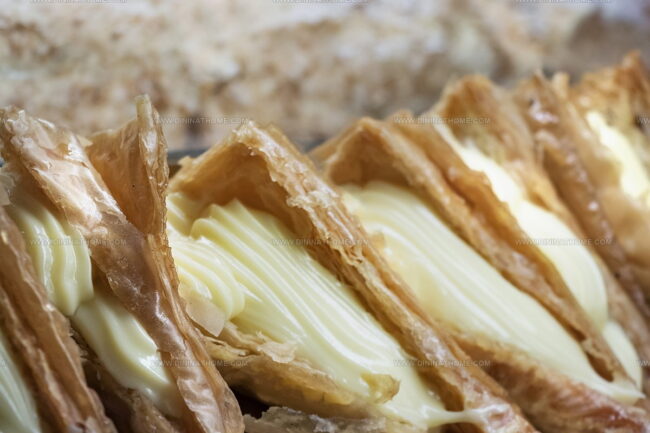
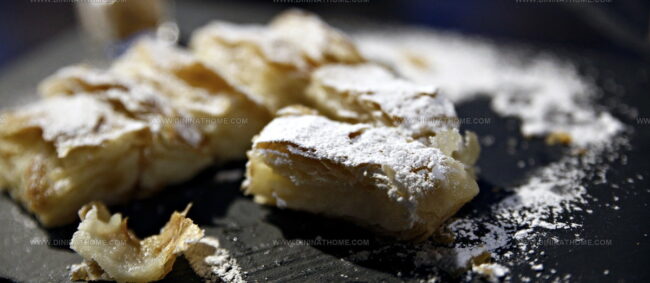
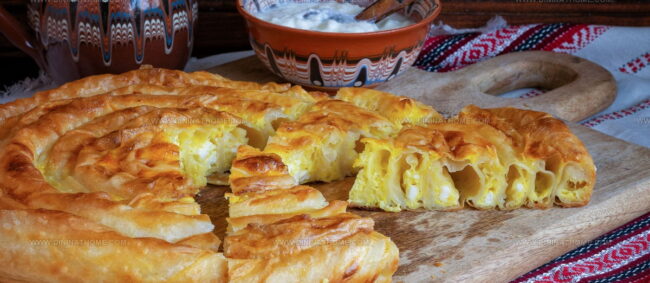
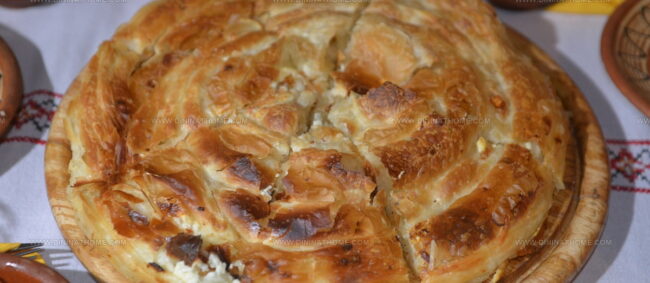
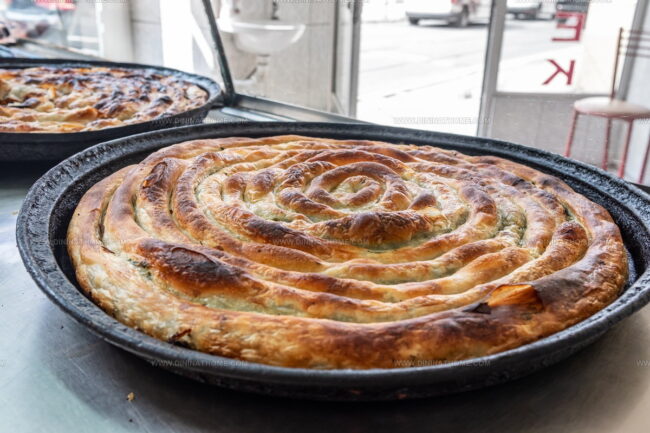

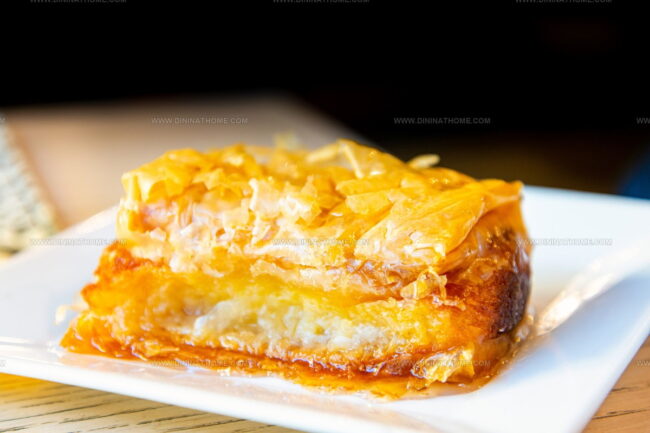
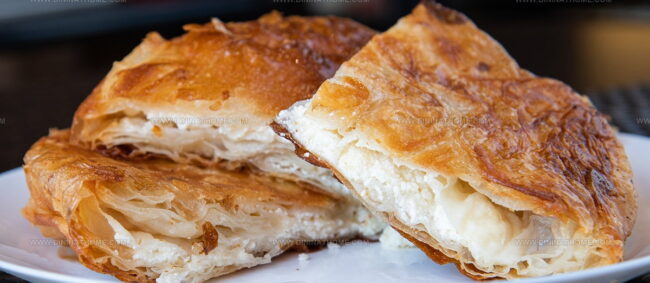
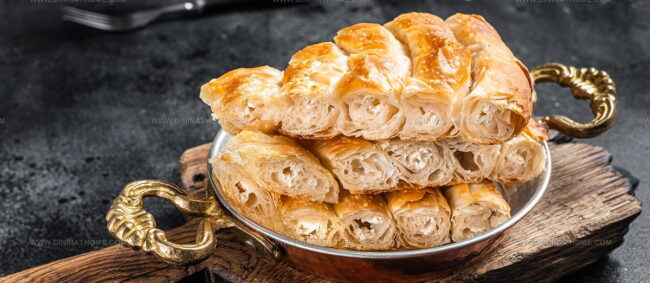
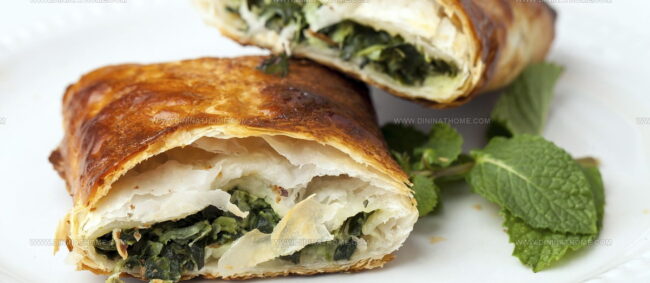
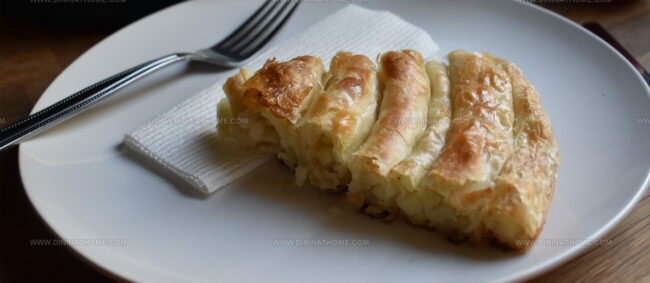
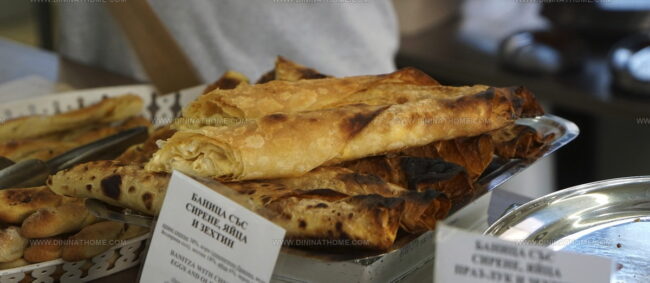
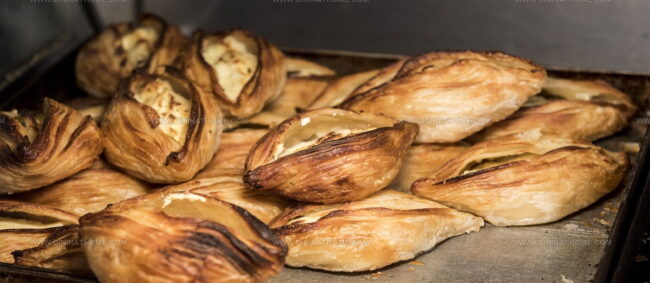
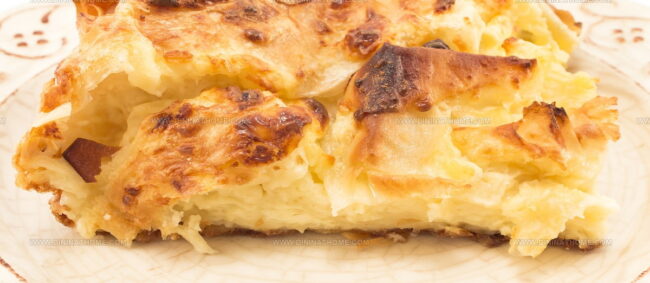
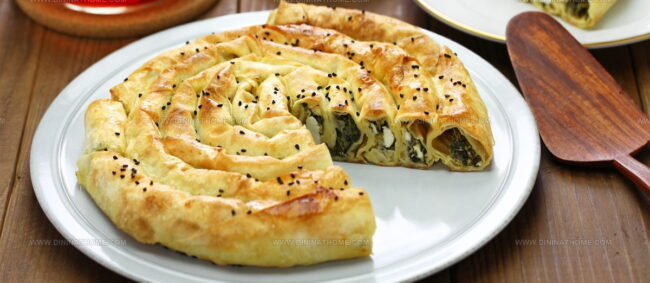
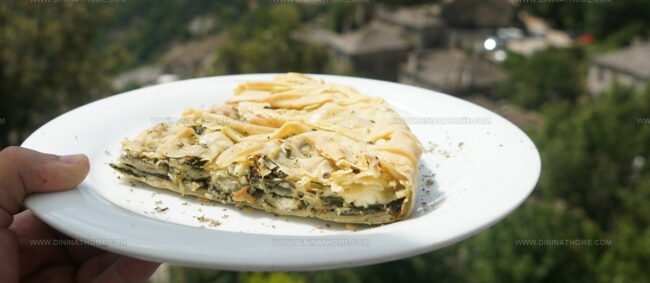
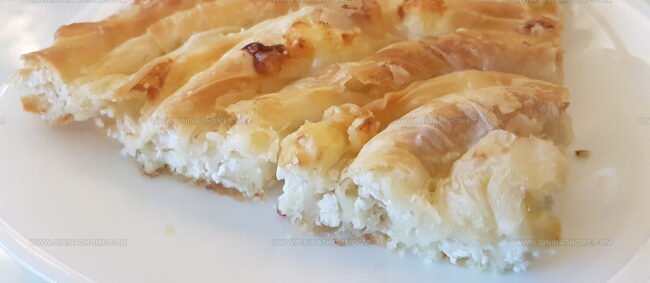
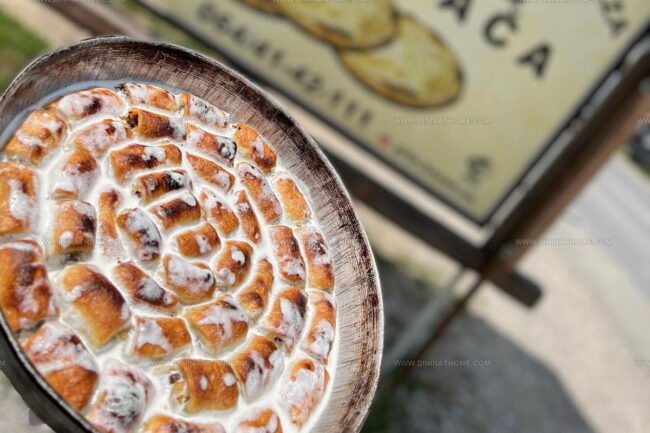
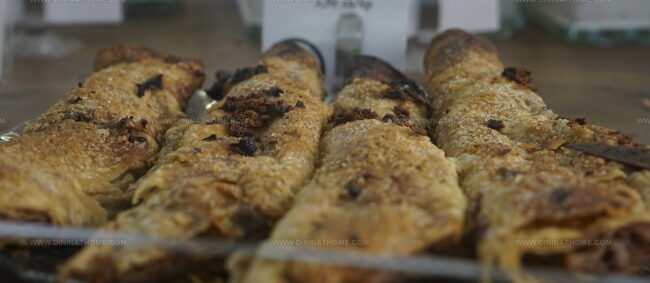
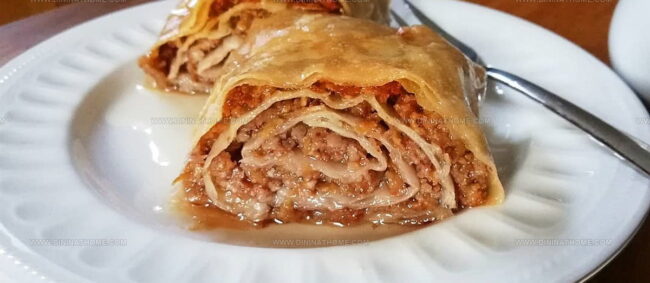
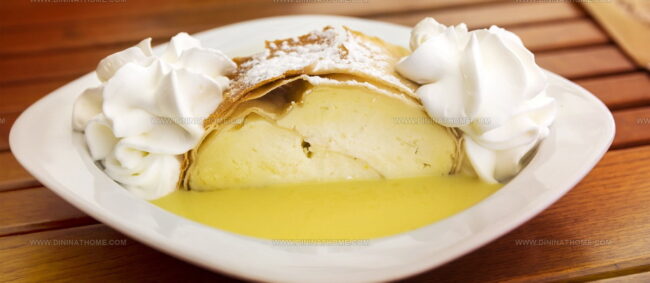
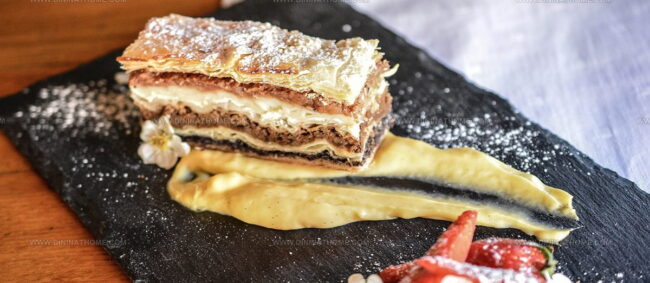
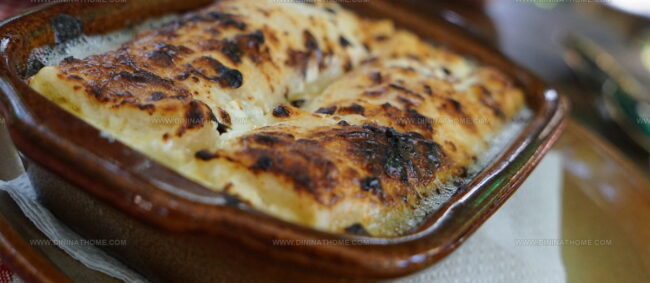
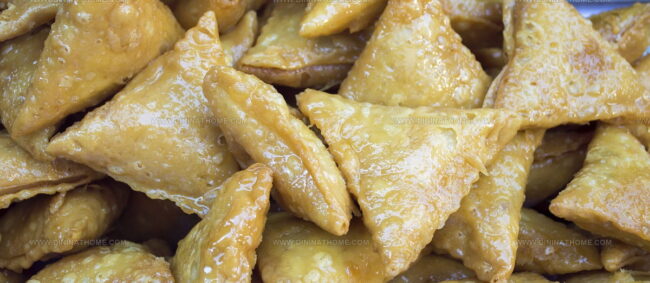
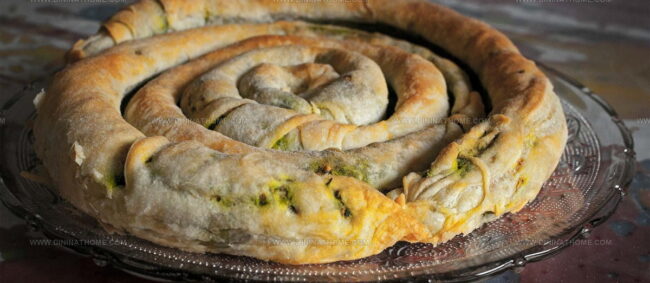
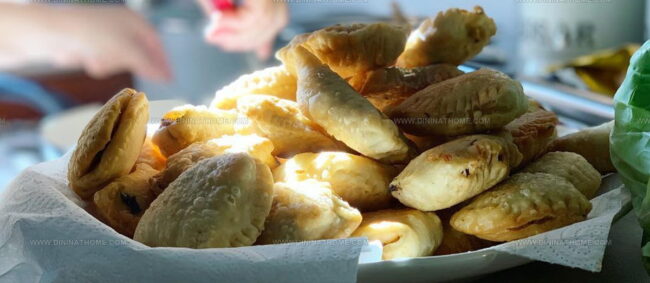
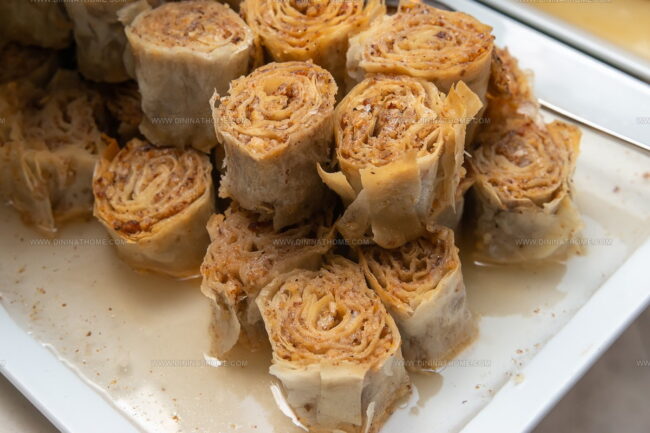

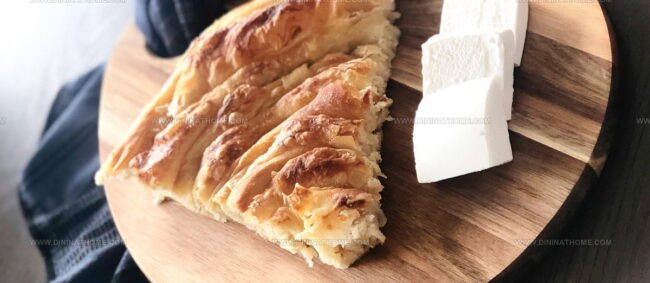
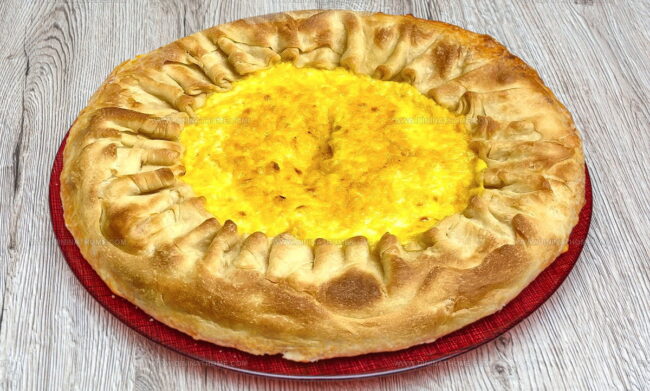
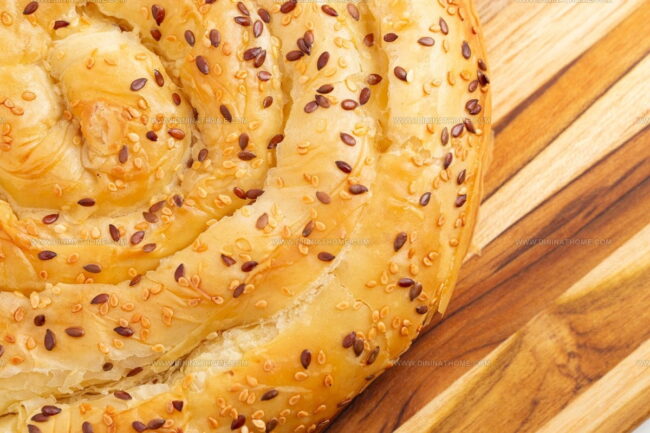

Emily Harper
Nutrition Consultant & Recipe Analyst
Expertise
Healthy Recipe Modification, Nutritional Analysis & Meal Planning, Global Cuisine & Dietary Adaptations
Education
School: French Pastry School, Chicago, IL
Program: L’Art de la Pâtisserie
Focus: Intensive training in traditional French pastry techniques, baking theory, and confectionery arts.
Emily’s journey started in a pastry kitchen but took a detour into the world of health and flavor science.
Graduating from the French Pastry School and studying nutrition opened her eyes to a new mission: making healthy food taste like something you’d actually crave.
At Dining At Home, Emily’s the go-to for smart, feel-good recipes that don’t trade flavor for nutrition.
She’s all about adding a fresh spin on old favorites and finding small ways to make everyday meals a little brighter.
Outside of the kitchen, Emily is most at home walking forest trails, testing plant-based recipes, or sharing a picnic under a wide-open sky.